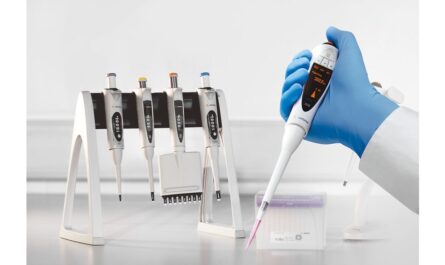
Electricity is one of the most crucial components of modern life. It powers everything from households to large industrial facilities. Maintaining a reliable and efficient power distribution network is vital. Substations play a key role in the distribution of electricity by transforming voltage from high to low, or vice versa, for transmission or distribution over long distances. With growing electricity demand and complex power networks, managing substations effectively has become more challenging than ever. That’s where substation monitoring systems come in.
Introduction to Substation Monitoring System
A substation monitoring system refers to the combination of hardware and software that allows utilities to monitor, control and protect electrical substation equipment remotely in real-time. Various sensors installed at substations continuously collect data on critical parameters like voltage, current, power factor, temperature etc. This data is transmitted to a central control room over communication networks. There, it is analyzed by control software to gain insights into the substation’s performance and detect any anomalies or outages. Utilities can then take prompt corrective actions to ensure continuity of power supply.
Key Elements of a Substation Monitoring System
A typical substation monitoring solution consists of the following main components:
Sensors & Instruments: These include potential transformers, current transformers, RTDs, power quality meters etc. to measure various electrical and non-electrical parameters.
Programmable Logic Controllers (PLCs): PLCs are installed to control substation equipment like circuit breakers, transformers etc. based on sensor readings and logic programs.
Communication Infrastructure: Technologies like fiber optic cables, copper wires, Ethernet, cellular networks, etc. are used to transmit data from the substation to the control center.
Master Terminal Unit (MTU): The MTU acts as the central data collection and control unit at the substation end. It gathers data from sensors/PLCs and communicates with the control center SCADA system.
SCADA Software: Supervisory Control and Data Acquisition (SCADA) software installed at the control center provides user interfaces to monitor live data, generate reports, issue remote commands and alarms.
Benefits of Substation Monitoring
Remote Visibility & Control: Allows utilities to centrally monitor all substations and take control actions from a single location without needing on-site personnel.
Early Fault Detection: Continuous monitoring helps identify irregularities, outages and failures at the earliest for quick fault analysis and resolution.
Improved Reliability: By enabling proactive issue identification and remedial measures, reliability of power distribution is significantly enhanced.
Data-driven Decision Making: Detailed historical and real-time data insights aid better operational and investment decisions for performance optimization.
Cost Savings: Eliminates unnecessary site visits for routine checks. Early problem detection also reduces the impact and costs of failures or outages.
Factors Considered While Implementing Monitoring Solutions
When installing a monitoring system for substations, certain important factors need to be evaluated:
Substation Layout & Assets: Size, configuration, key equipment used determines scope and technical specifications.
Communication Infrastructure: Choosing appropriate communication technologies based on bandwidth needs, terrain, availability etc.
System Scalability: The solution must accommodate future expansion as load/assets grow over time.
Cyber Security: Strong authentication, encryption, access controls are a must for such critical infrastructure.
Standard Protocols: Following open communication protocols aids seamless integration with existing systems.
Total Cost of Ownership: Upfront and long-term maintenance costs must be carefully estimated.
Regulatory Compliance: Solutions must adhere to all local utility regulatory guidelines.
With these considerations, utilities can select optimal, future-proof substation monitoring solutions tailored to their specific requirements.
Current Trends in Substation Monitoring
The substation monitoring market is rapidly evolving with several emerging technologies enhancing monitoring capabilities:
IoT Integration: Incorporating Internet of Things allows condition-based monitoring of newer distributed energy resources besides conventional bulk power assets.
Edge Intelligence: Edge devices and gateways with local processing ability help reduce bandwidth usage while enabling some analytics at substations.
Advanced Sensors: Sophisticated sensors provide deeper insights into power quality, equipment health etc. promoting predictive maintenance.
Data Analytics: Utilities are leveraging big data analytics and AI/ML to glean unprecedented insights from vast monitoring data for stronger cybersecurity, load forecasting and more.
Security: Blockchain, increased authentication, encryption and access controls are making monitoring infra more robust against cyber threats.
5G Connectivity: Next-gen cellular networks will facilitate real-time analytics and control from monitoring data with ultra-low latency and high bandwidth capabilities.
These technologies are revolutionizing the way substations are monitored and operated to enhance grid reliability, resilience and performance in real time. They chart the path for future-proof and cost-effective monitoring solutions.
Conclusion
In summary, substation monitoring systems have emerged as a critical tool for electricity utilities to remotely supervise and manage their vast distribution networks efficiently. By providing real-time visibility and operational control, these systems play a pivotal role in grid modernization efforts. Technologies such as IoT, edge processing, advanced sensors and 5G will further augment monitoring capabilities in the times ahead to support tomorrow’s smart grids. They promise to transform the way power will be distributed and consumed across the globe.
*Note:
- Source: Coherent Market Insights, Public sources, Desk research
- We have leveraged AI tools to mine information and compile it



